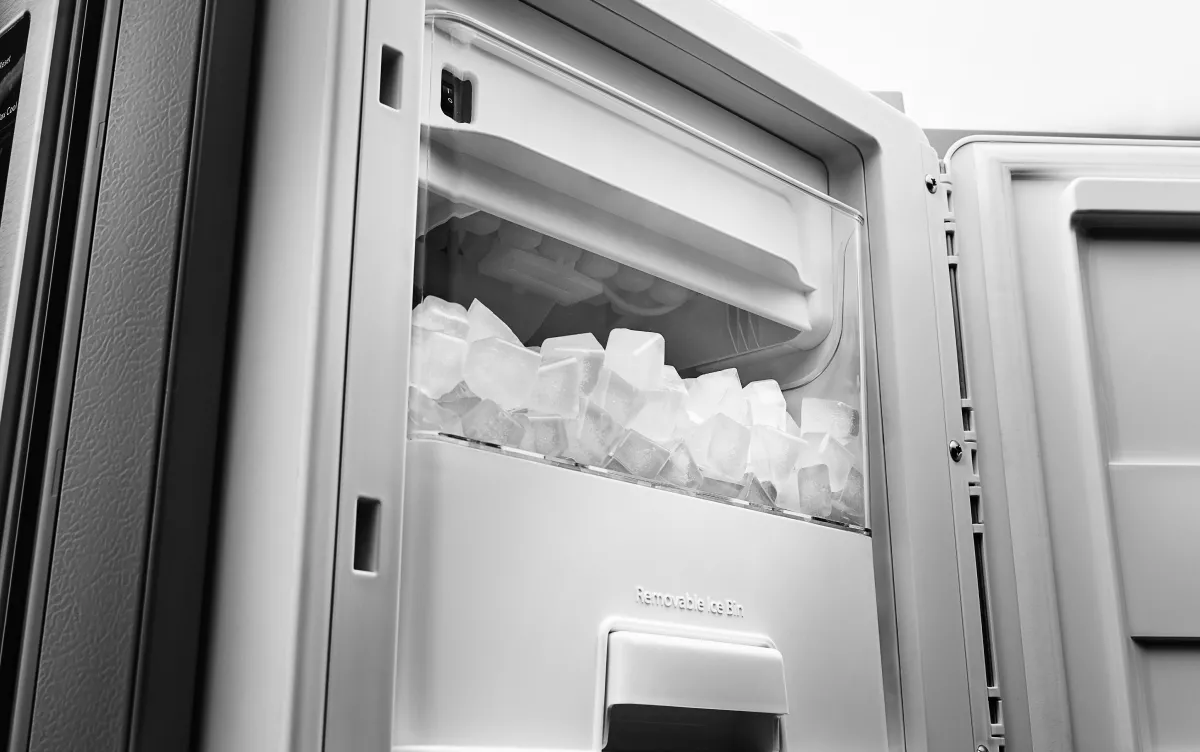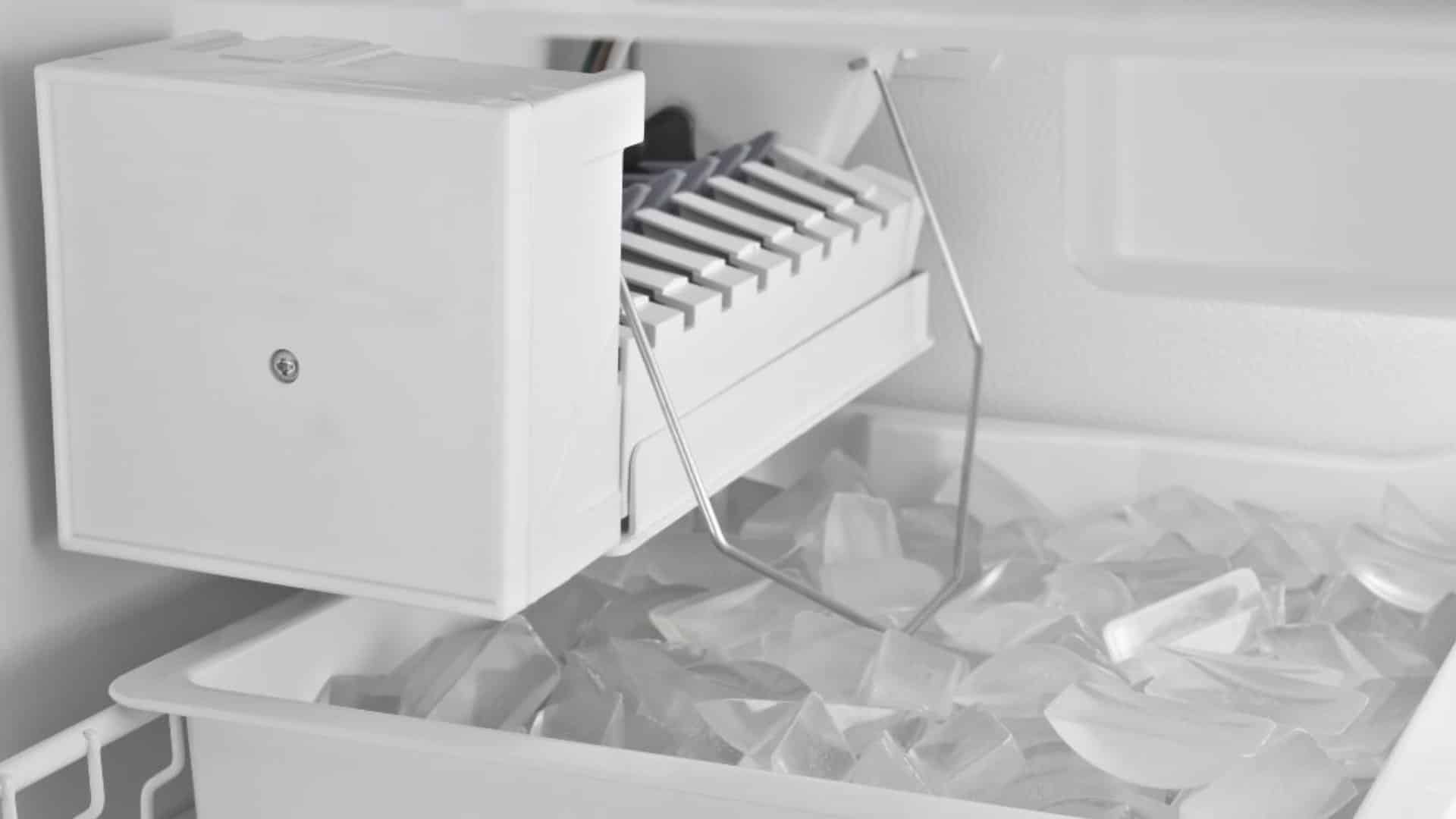The Kitchenaid Superba Ice Maker is a reliable appliance. But even the best can have issues.
If your Kitchenaid Superba Ice Maker isn’t working, don’t worry. Many common problems have simple fixes. Understanding these issues can save you time and money. This guide will help you troubleshoot your ice maker. We’ll cover everything from no ice production to strange noises.
By the end, you’ll have the knowledge to address these problems with confidence. Let’s get started on solving your ice maker’s issues.
Common Issues
Experiencing issues with your Kitchenaid Superba Ice Maker can be frustrating. This section will help you identify common problems and provide troubleshooting tips. Here are some of the most frequent issues users encounter.
Ice Maker Not Working
If your ice maker is not working, it could be due to several reasons. Follow these steps to troubleshoot:
- Check the Power Supply: Ensure the ice maker is plugged in properly. Verify that the outlet is functional.
- Inspect the Water Line: Make sure the water line is connected and not kinked. A blocked or damaged line can stop the ice maker.
- Examine the Control Arm: Ensure the control arm is in the down position. An up position may signal the ice maker to stop producing ice.
- Reset the Ice Maker: Sometimes resetting the ice maker can resolve the issue. Refer to the user manual for instructions.
Ice Maker Not Producing Enough Ice
Is your ice maker not producing enough ice? This could be due to several factors. Here’s what to check:
- Water Filter: A clogged water filter can reduce ice production. Replace the filter if it’s dirty.
- Freezer Temperature: Ensure your freezer temperature is set correctly. The ideal range is between 0°F and 5°F.
- Ice Bin: Check if the ice bin is full. A full bin may signal the ice maker to stop producing more ice.
- Water Pressure: Low water pressure can affect ice production. Ensure the water pressure is between 20 and 120 PSI.
Troubleshooting these common issues can help restore your Kitchenaid Superba Ice Maker to proper working condition. Remember, regular maintenance is key to preventing these problems.
Basic Checks
If your Kitchenaid Superba Ice Maker is not working properly, start with basic checks. These simple steps might resolve the issue without any expert help. Here are the fundamental things you need to inspect.
Power Supply
Check the power supply first. Ensure the ice maker is plugged in securely. Sometimes, a loose plug can cause issues.
Verify the outlet is working. Plug in a different device to confirm. If the outlet is dead, check your home’s circuit breaker. Reset it if tripped.
Water Supply
Your ice maker needs a steady water supply. Confirm the water line is connected properly. Look for any bends or kinks in the hose.
Make sure the water valve is open. Sometimes, it gets accidentally turned off. Also, check the water filter. A clogged filter can stop the water flow. Replace the filter if needed.
| Check | Action |
|---|---|
| Power Connection | Ensure the plug is secure |
| Outlet | Test with another device |
| Circuit Breaker | Reset if tripped |
| Water Line | Check for bends or kinks |
| Water Valve | Ensure it’s open |
| Water Filter | Replace if clogged |
Resetting The Ice Maker
Resetting your KitchenAid Superba Ice Maker can solve many common issues. It is an essential skill for any homeowner to master. Resetting the ice maker helps in clearing minor glitches and restoring the appliance to its optimal performance. If your ice maker is not producing ice, a reset might be the solution you need.
How To Reset
To reset your KitchenAid Superba Ice Maker, follow these steps:
- Locate the power button on the ice maker.
- Turn off the ice maker by pressing the power button.
- Wait for 30 seconds before turning it back on.
- Press and hold the reset button for 10 seconds.
- Release the reset button and wait for the ice maker to restart.
These steps should help in resetting the ice maker.
When To Reset
Knowing when to reset your ice maker is crucial. Here are some scenarios:
- Ice maker is not producing ice.
- Ice cubes are smaller than usual.
- Ice maker is making strange noises.
- Water supply issues are resolved.
Resetting can often fix these common problems.
If issues persist, consult the user manual or a professional technician.
Cleaning The Ice Maker
Keeping your Kitchenaid Superba ice maker clean is important. It ensures your ice tastes fresh and your machine works well. Regular cleaning helps prevent build-up and keeps your ice maker running smoothly.
Cleaning Steps
First, unplug the ice maker. This ensures your safety. Remove all ice from the bin. Discard any ice that’s left. Next, take out any removable parts. Wash them with warm, soapy water. Rinse and dry them well.
Use a soft cloth and soapy water to clean the inside. Wipe down the ice bin, walls, and other surfaces. Avoid using harsh chemicals. They can damage your machine. For stubborn spots, use a mixture of vinegar and water.
Finally, rinse everything with clean water. Dry all parts completely. Reassemble your ice maker. Plug it back in and resume normal use.
Cleaning Frequency
Clean your Kitchenaid Superba ice maker every six months. If you use it often, clean it more frequently. Pay attention to any changes in ice taste or smell. This can be a sign that cleaning is needed.
Regular maintenance ensures your ice maker stays in good condition. It prolongs the life of your machine. Consistent cleaning helps prevent malfunctions and keeps your ice tasting great.
Inspecting Components
Inspecting the components of your Kitchenaid Superba ice maker can solve many issues. It is essential to check various parts to ensure the ice maker works perfectly. This section will guide you through the process of checking two crucial components: the water filter and the ice mold.
Check The Water Filter
A clean water filter is vital for proper ice production. Locate the water filter in your Kitchenaid Superba ice maker. Usually, it is behind the refrigerator’s front grille or inside the fridge. Remove the water filter and inspect it for dirt and debris. A clogged filter can block water flow, affecting ice production. Replace the filter if it appears dirty or has not been changed in six months. Make sure to follow the manufacturer’s instructions for replacing the filter.
Inspect The Ice Mold
The ice mold is where water freezes into ice cubes. Check the ice mold for any ice buildup or damage. If you see ice buildup, it may indicate a problem with the water supply or the ice maker’s heating element. Gently remove any ice buildup using warm water. Avoid using sharp objects to remove ice, as this can damage the mold. Also, inspect the mold for cracks or deformities. A damaged mold can prevent proper ice formation. If you find any damage, consider replacing the ice mold.

Credit: www.kitchenaid.com
Temperature Settings
Having the right temperature settings is crucial for your Kitchenaid Superba Ice Maker. If the temperature is too high or too low, it can affect ice production. Adjusting the settings can be simple and ensures your ice maker works efficiently.
Optimal Freezer Temperature
The optimal freezer temperature for your ice maker should be between 0°F and 5°F. This range ensures that the ice cubes freeze properly. If the temperature is too high, ice cubes may be smaller or not form at all. Too low, and you might have problems with the ice maker’s mechanism.
Adjusting Settings
Adjusting the temperature settings on your Kitchenaid Superba Ice Maker is straightforward. Locate the temperature control dial inside the freezer. Turn the dial to the desired temperature within the optimal range. Wait for a few hours and check if the ice maker is producing ice correctly.
If issues persist, you may need to recalibrate the thermostat. Refer to your user manual for detailed instructions. Always ensure that the freezer door seals are tight. This helps maintain the right temperature inside.
Replacing Parts
Replacing parts in your Kitchenaid Superba Ice Maker can keep it running smoothly. This process might seem complex, but with the right guidance, it’s manageable. This guide will help you identify faulty parts and find replacements. Let’s dive in.
Identifying Faulty Parts
First, inspect your ice maker. Check if it’s making ice. Listen for unusual noises. Look for leaks around the machine. If you find these issues, a part might be faulty.
Next, check the water supply line. Ensure it’s not kinked or blocked. If the ice maker isn’t getting water, it won’t make ice. Examine the ice mold. If it’s damaged, it won’t hold water properly.
Finally, test the ice maker’s motor. A faulty motor will prevent ice production. Use a multimeter to check for electrical issues. If any part fails these tests, it needs replacement.
Where To Buy Replacements
You can buy replacement parts from several sources. Kitchenaid’s official website is a reliable option. They offer genuine parts designed for your ice maker.
Local appliance stores also stock Kitchenaid parts. Visit them for immediate purchases. Online marketplaces like Amazon and eBay have a wide range. Ensure the parts are compatible with your model.
Always check customer reviews before buying. Good reviews indicate reliable parts. With the right parts, your ice maker will work like new.

Credit: www.kitchenaid.com
Professional Help
Sometimes, KitchenAid Superba ice makers need professional help. This ensures the problem gets fixed properly. Understanding when to call a technician is crucial. It saves time and prevents further damage.
When To Call A Technician
Certain issues need expert attention. If the ice maker stops working, call a professional. If you notice leaks, unusual noises, or electrical issues, it’s time to seek help. Also, if basic troubleshooting steps fail, a technician is necessary.
Cost Considerations
Hiring a technician involves cost. The average service fee ranges from $100 to $300. The exact amount depends on the problem’s complexity. It’s a good idea to get multiple quotes. This ensures you get a fair price. Remember, spending on professional help can save money in the long run.

Credit: viaappliance.com
Frequently Asked Questions
Why Is My Kitchenaid Superba Ice Maker Not Making Ice?
Check if the ice maker is turned on. Ensure the water supply is connected. Verify the freezer temperature is set correctly.
How Do I Reset My Kitchenaid Superba Ice Maker?
Locate the reset button, usually under the ice tray. Press and hold it for 10 seconds.
What Causes My Kitchenaid Superba Ice Maker To Leak Water?
A clogged or frozen water line can cause leaks. Check and clear any blockages. Ensure connections are tight.
Why Is My Kitchenaid Superba Ice Maker Making Noise?
Ice makers make noise during ice production. Loud or unusual sounds may indicate a mechanical issue. Inspect for obstructions.
How Often Should I Clean My Kitchenaid Superba Ice Maker?
Clean your ice maker every 3-6 months. Remove buildup and sanitize parts to ensure proper functioning and hygiene.
Conclusion
Troubleshooting your Kitchenaid Superba ice maker can be simple. Follow the steps shared. Regular maintenance prevents many common issues. Clean the ice maker regularly. Check for blockages and ensure proper water flow. Replace filters as needed. Simple checks save time and money.
Enjoy hassle-free ice making. Stay cool and keep your Kitchenaid Superba running smoothly. For persistent problems, contact a professional. Your ice maker will thank you. Happy ice making!
